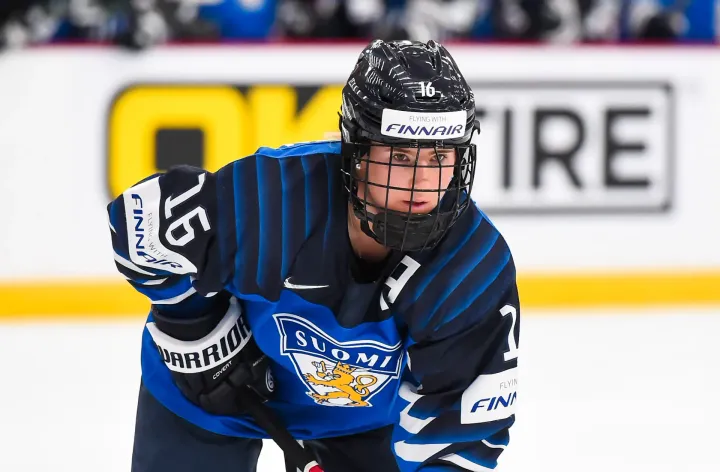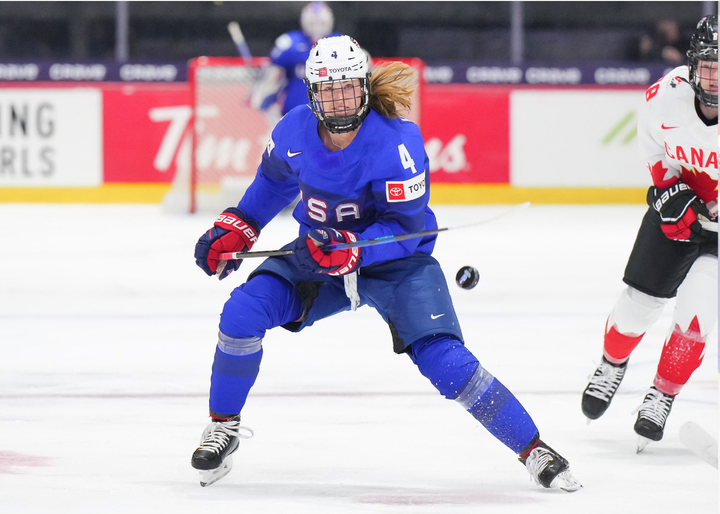Women’s World Cup of Hockey
What could rosters look like for a hypothetical World Cup of Hockey?
Currently, the top division of international women’s hockey competes once a year either at the World Championships in Spring or at the Olympics. Every fall, Finland, Canada, the United States, and Sweden compete in Four Nations. Otherwise, save for some exhibitions - like the Rivalry Series - there isn’t much in the way of international play.
That got me thinking about incorporating another major international tournament. Specifically, a tournament that could come at the midpoint of the Olympic cycle or during the summer or winter break for collegiate players.
In 2016, the NHL’s World Cup of Hockey took place in Toronto with a new and particularly interesting format. The ‘Big Six’ (Canada, USA, Czech Republic, Finland, Russia and Sweden) were joined by an under-23 Team North America and Team Europe, which was comprised of players from European countries that had relatively small footprints on NHL rosters. The event was a huge hit.
Wouldn’t it be interesting to have a World Cup of Hockey for women that followed a similar format?
In this hypothetical, there would be seven teams instead of the eight we saw in the men’s tournament. For simplicity’s sake, let’s say the two teams with the lowest goal differentials after round-robin play will compete in a ‘play-in’ game, much like last year’s NWHL Playoffs format.
The seven teams competing in this hypothetical World Cup of Hockey are as follows: Team USA, Team Canada, Team Finland, Team Sweden, Team Russia, Team Europe, and Team North America. The rosters for Finland, Sweden, and Russia would not be affected by Team Europe and Team North America, but what might the other four rosters look like, if the tournament were held this summer?
I took a shot at building a few rosters with the following rules: Team North America must be made up of players 23 and under, and Team Europe will include players from any European country — regardless of IIHF division, as this is an independent event — that is not otherwise represented.
Now, without any further delay, let’s talk rosters.
TEAM USA
Goaltenders: Katie Fitzgerald, Nicole Hensley, Alex Rigsby
Defenders: Kacey Bellamy, Blake Bolden, Megan Bozek, Sidney Morin, Emily Pfalzer, Shelly Picard, Lee Steckelin
Forwards: Hannah Brandt, Alex Carpenter, Kendall Coyne-Schofield, Jonna Curtis, Brianna Decker, Maddie Elia, Amanda Kessel, Hilary Knight, Gigi Marvin, Annie Pankowski, Hayley Scamurra, Haley Skarupa, Dana Trivigno
Projected lineup:
Coyne/Decker/Knight
Pankowski/Carpenter/Kessel
Skarupa/Elia/Scamurra
Marvin/Brandt/Curtis + Trivigno
Bellamy/Bozek
Pfalzer/Stecklein
Bolden/Morin + Picard
TEAM CANADA
Goaltenders: Geneviève Lacasse, Emerance Maschmeyer, Shannon Szabados
Defenders: Erin Ambrose, Renata Fast, Laura Fortino, Katelyn Gosling, Halli Krzyzaniak, Brigette Lacquette, Jocelyne Larocque
Forwards: Ann-Sophie Bettez, Mélodie Daoust, Brianne Jenner, Rebecca Johnston, Sarah Lefort, Cayley Mercer, Sarah Nurse, Marie-Philip Poulin, Jamie Lee Rattray, Jill Saulnier, Natalie Spooner, Laura Stacey, Blayre Turnbull
Projected lineup:
Bettez/Poulin/Daoust
Spooner/Jenner/Johnston
Saulnier/Turnbull/Stacey
Nurse/Rattray/Mercer + Lefort
Fortino/Fast
Ambrose/Lacquette
Larocque/Krzyzaniak + Gosling
TEAM NORTH AMERICA
Goaltenders: Abbey Levy (USA), Maddie Rooney (USA), Shea Tiley (CAN)
Defenders: Cayla Barnes (USA), Jamie Bourbonnais (CAN), Jincy Dunne (USA), Savannah Harmon (USA), Megan Keller (USA), Ella Shelton (CAN), Micah Zandee-Hart (CAN)
Forward: Victoria Bach (CAN), Sydney Brodt (USA), Dani Cameranesi (USA), Emily Clark (CAN), Jesse Compher (USA), Sarah FIllier (CAN), Loren Gabel (CAN), Jaycee Gebhard (CAN), Élizabeth Giguère (CAN), Kelly Pannek (USA), Melissa Samoskevich (USA), Daryl Watts (CAN), Grace Zumwinkle (USA)
Projected Lineup:
Gabel/Pannek/Cameranesi
Watts/Clark/Bach
Brodt/Compher/Giguère
Samoskevich/Gebhard/Fillier + Zumwinkle
Keller/Harmon
Bourbonnais/Barnes
Shelton/Dunne + Zandee-Hart
TEAM EUROPE
Goaltenders: Caroline Baldin (France), Jennifer Harß (Germany), Anikó Németh (Hungary)
Defenders: Linn Aarke (Norway), Tanja Eisenschmid (Germany), Kayleigh Hamers (Netherlands), Daniela Pejšová (Czech Republic), Aneta Tejralová (Czech Republic), Lene Tendenes (Norway), Sabrina Zollinger (Switzerland)
Forwards: Marion Allemoz (France), Denise Altmann (Austria), Chloé Aurard (France), Lore Baudrit (France), Fanni Gasparics (Hungary), Denisa Křížová (Czech Republic), Kateřina Mrázová (Czech Republic), Alina Müller (Switzerland), Michaela Pejzlová (Czech Republic), Karolina Późniewska (Poland), Nicoline Söndergaard Jensen (Denmark), Savine Wielenga (Netherlands), Julia Zorn (Germany)
I couldn’t find enough lineups to determine exactly where each of these players could or should play and create a projected lineup. So, in lieu of that, I’ll give a little information about some of the players I picked for Team Europe.
Baldin and Harß have both put up great stats at top division IIHF World Championships. This past Worlds, Harß had a .935 SV% and Baldin, in her first top division Worlds appearance, had a .929 SV%. Németh is only 22 but has been representing Hungary on the international stage for years. This past year at Division 1A Worlds, she posted a staggering .968 SV% over 4 games.
With an impressive 40 saves in the opening game of the 2019 #WomensWorlds, Team Germany's ( @deb_teams ) @JennyHarss takes the title of Player of the Day. 🙌 🇩🇪 pic.twitter.com/MNtRYOBs4J
— IIHF (@IIHFHockey) April 4, 2019
Linn Aakre was second in points in her league (Kvinner Elite) last season — not second in points for defenders, second in points overall with 28, and her career high is 40. Daniela Pejšová is only sixteen, but just made her first appearance with the Czech senior team at Worlds and finished with a +3 rating.
Aurard, Müller and Pejzlová have all performed impressively in the NCAA, and last season Křížová and Mrázová were show-stealers in the NWHL and at 2019 Worlds. At Division 1A Worlds this year, Fanni Gasparics recorded 12 points in 5 games, and 40 points in 10 EWHL games. No, that’s not a typo.
My prediction: Team North America could (and would) take it all, with a combination of speed, skill, and smart defenders who play both sides of the puck.
A World Cup of Hockey would be a great way to showcase the depth of talent from across the globe. Having Team North America would be a fantastic way to get college hockey fans engaged and to give USA Hockey and Hockey Canada another way to evaluate up-and-coming talent. More importantly, the diversity on Team Europe would give fans an opportunity to watch some of the most talented players in the world who are so often overlooked because their countries don’t compete in the top international division.
In theory, the World Cup of Hockey could become the next crown jewel on the women’s hockey calendar. Furthermore, it represents an opportunity for Gary Bettman and the NHL to support women’s hockey across the globe without creating a league. Besides, who can say no to more international women’s hockey?
All stats taken from EliteProspects.





Comments ()